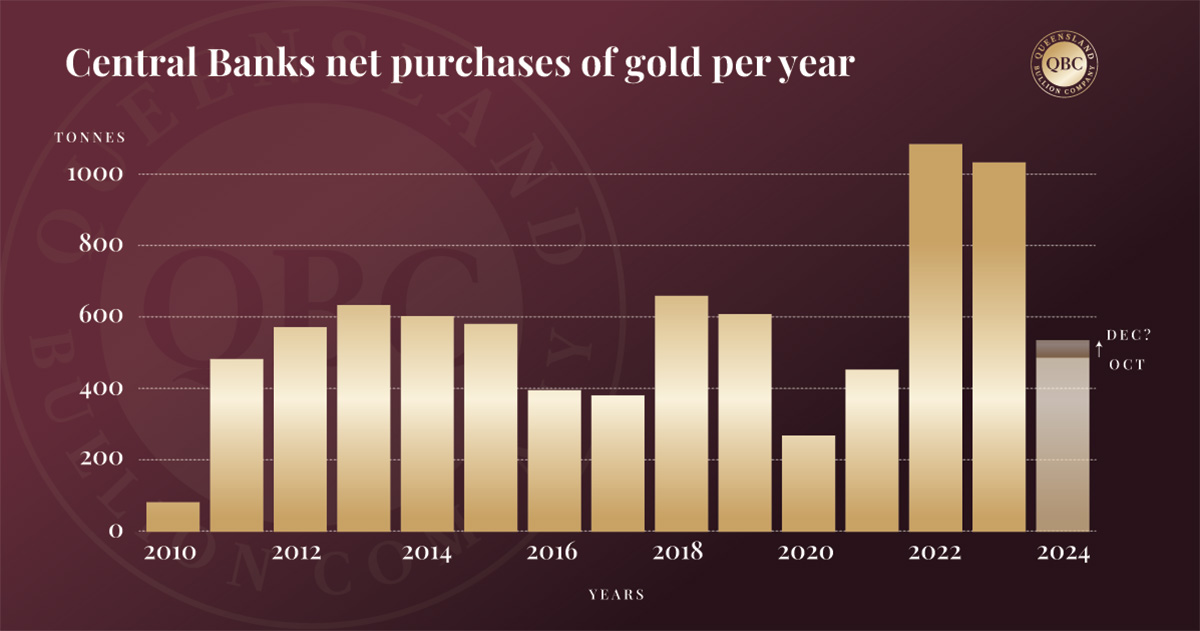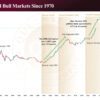The Rising Tide of Gold and Silver Amid Economic Uncertainty
by Melanie YoungIn a notable market update this week, gold prices soared by 2.7% to reach USD $2,672.07 (AUD $3877.08) per troy ounce, while silver experienced an even more robust increase of 6%, now priced at USD $31.96 (AUD $46.37) per ounce. This surge can be attributed to the U.S. Federal Reserve’s recent decision to cut interest rates by 0.50%. This initial reduction is anticipated to be the first in a series, with forecasts suggesting a further 1.90% decrease by the end of 2025. As a result, the gold-to-silver ratio has dropped to 83, indicating an imbalance that may favour silver’s future performance.
The immediate aftermath of the Fed’s announcement saw not just precious metals rallying, but also a broad rise across various risk assets, including equities, commodities, and cryptocurrencies. However, history indicates that while such rate cuts can provide a temporary boost to the markets, they often precede significant pullbacks, especially when recessionary pressures emerge. This trend underscores the importance of including gold and silver in investment portfolios during times of economic turbulence, particularly as core inflation remains an issue.
Silver’s potential for outperforming gold is driven by a convergence of factors. Industrial demand is on the rise, and supply constraints further enhance its value proposition. Additionally, silver’s historical performance during inflationary periods positions it as an attractive investment, especially when priced relative to gold. With the gold-to-silver ratio currently favouring gold, savvy investors may view this as an opportunity to capitalise on silver’s potential for appreciation. This is especially so when considering that silver is at an all-time high over the last ten years.
As we delve deeper into market dynamics, it becomes clear that we are entering a short-term phase characterised by increasing liquidity. While many observers are wary of an imminent market collapse akin to the 2008 financial crisis, a significant influx of liquidity is creating a euphoric environment across various sectors. This is largely due to the fact that the Fed rate cut has allowed those on Wall Street to borrow further funding from banks to invest across a variety of risk assets. Such a cycle of rising asset prices may eventually be followed by a sharp downturn, emphasising the necessity for careful navigation.
During the 2008 crisis, gold and silver proved resilient, gaining value while most assets depreciated. Historically, gold has maintained its status as a safe haven, flourishing amid increased liquidity and market corrections. Conversely, while both metals can face volatility in the short term, their long-term trends generally remain upward, particularly as investors seek refuge in tangible assets during systemic collapses and unstable geopolitical factors. In addition, there is a US election looming in November this year that may have a significant impact on asset prices.
In conclusion, the recent moves in gold and silver prices reflect broader economic trends driven by monetary policy changes and market sentiment. While immediate gains are evident, the potential for longer-term appreciation, especially for silver, remains substantial. Investors should remain vigilant, capitalising on historical patterns while being prepared for the inherent volatility that accompanies market cycles. As we navigate this complex landscape, those who focus objectively on data to anticipate crises will likely find themselves in a prime position to seize generational opportunities at this stage in the precious metals bull cycle.










